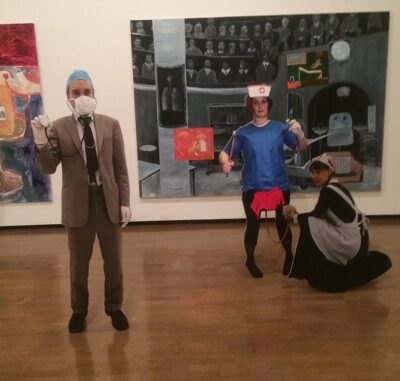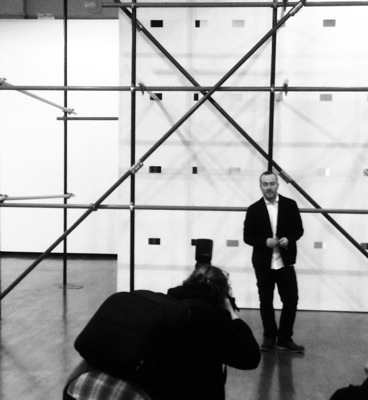
Want to see the next-big-things in the art world? Head to Premiums Interim Projects at the Royal Academy’s Burlington Gardens exhibition rooms. Here you can see work from 17 students who are studying for the three year postgrad course. Today you haven’t heard of them, tomorrow they will be stars. Well, not precisely tomorrow as they still have 18 months of their course to go, but in the great scheme of things it shouldn’t be long until their work is hanging in the Tate. After all, past students at the RA have included Turner, Blake and Constable.
Being RA students they are not showing their work in hastily whitewashed studios with grubby floors. Rather they have access to one of the grandest exhibition spaces available in London, one that has only recently seen the work of Royal Academician Bill Woodrow.
The artists on show have wide-ranging interests, from Outer Space to The Cult of John Frum. This leads to – as one of their number put it to me – a theme park of a show, with different ideas and interests being investigated in different parts of each room. But ’twas ever thus with group shows and the only piece that overly affects its neighbours is Henry Coleman’s toweringly architectural sculpture in the first main hall.
For some process is important. Caroline Abbotts presents analogue photographic work on glass. These are delicate pieces so big she had to build her own dark room before she could make them. Known as photograms they are nothing to do with the currently more popular instagram. Instead they are a means of making photographic images with photographic emulsion, image-manipulation, but no camera. These are elegant pieces, well displayed to bring out their sculptural qualities.

Max Prus, installation detail
Max Prus is showing large scale paintings with a twist. He doesn’t paint them all himself – neither does he have Damian Hirst style assistants following his instructions. As a film maker he works collaboratively and he has transferred that process to his canvases. How? By bringing home people he has just met and getting them to help out with the painting. These aren’t artists and there doesn’t seem to be a long casting process – ‘If they say they can’t paint that’s usually a sign they can,’ he explained, although some people’s attempts have forced him to throw pictures away and start again. Working with images of hospitals and surgical theatres he has stood images of the artistic-helpers in front of the works. This gives a theatrically three-dimensional aspect to the works which was inspired by watching the pieces come together in the studio.

Henry Coleman has his photo taken in front of his work
Prus is to be admired for the no-nonsense artist’s statement he includes in the show. ‘I am gluttonous, obsessive and bored’, he opines, ‘which might be why I am mistaken for an artist.’ Every area of life has its jargon, but members of the art world are particularly prone to making statements that verge on making no sense. Sometimes they even o’erleap that boundary. I mean, o’er leap that boundary?! There’s a good example of what I mean right there. Convoluted phraseology and extra-long words are rarely good ways to describe artistic practice. Even when they are they can lead to what one critic confided to me were ‘unbelievably pretentious statements.’ One artist describes himself as a ‘self-satirical auteur’, who ‘uses his presence as a material to self-consciously examine his role as an artist.’ Maybe he is and maybe he does, but artists do themselves no favours when writing about their work in highfalutin phrases. Luckily you can find out more about the artists’ individual interests in a very readable way in the latest edition of the RA magazine, or online here.
So who’s going to win the Turner prize in the future? It’s hard to pick a name, but it’s likely to be one of them. Hipsters, make sure you visit now so you can say you liked their work before they were famous.
Free entry
Until 19th March

Leave a Reply